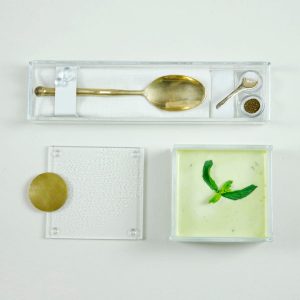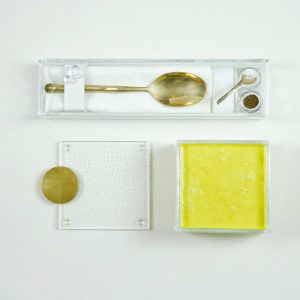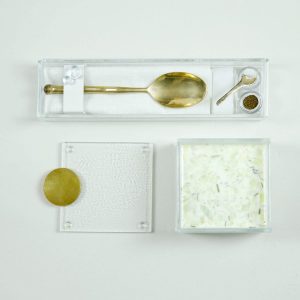Sanitizing dishes in the food service industry has for a long time been prioritized and for a good reason, customers’ health comes first. It is because of customers’ health that before tabling a cleaning routine, it is important for hoteliers even homes to invest in a non toxic dinnerware set.
The culture of maintaining first-rate hygiene has guaranteed restaurants a repeat clientele for decades on end. But now, a new dawning is upon us, with Covid-19, conventional cleaning routine may not satisfy our clients anymore.
Food Safe Dinnerware and Hygiene
It is easy to get sold on the aesthetics and design of dinnerware and overlook its functionality. There is always the temptation to buy a dinnerware set that blends with your restaurant’s ambience, without checking if it is toxic dinnerware or non toxic dinnerware.
It is mostly for this reason that a lot of hospitality facilities do not measure up to health and safety guidelines. Despair not, as this article will purpose to highlight, which materials pass as food safe dinnerware.
When it comes to dinnerware these materials pass as the top picks for restaurants and homes: Bone china, earthenware, porcelain, melamine and stoneware. As much as there is a pool of variety to choose from, identifying food safe dinnerware that guarantees hygiene, quality, durability and return of investment to your commercial kitchen goes a long way. Here are Pros and Cons for selected dinnerware materials.
- Vitrified Glass is made through Vitrification process where it is fired at a high temperature making glass non porous and durable. It’s dishwasher safe.
- Melamine is typically made from plastic but its features are supreme over standard plastic ware making it dishwasher resistant. Melamine is usually a preferred option because it’s affordable, appealing, hard to shatter or chip. Except, this comes at an expensive loss. It has a porous material that is a suitable hiding spot for bacteria. It is also not suitable for the oven or microwave.
- Ceramics can be made from pottery, terracotta, fine china, bone china, porcelain, glazed earthenware, paper clay and stoneware. However not all materials used to make ceramics are equally durable or non porous.
- Porcelain is durable because of high firing temperatures. It is also dishwasher -safe. It’s non-porous with glaze, however if it cracks bacteria can easily enter the material make it unsafe.
- Marble has a porous material but it is not as easy to disinfect.
- Lacquerware cannot be dish washed or soaked in water or come in contact.
- Wood is porous, not as easy to clean and cannot be used in dishwasher.


Sanitizing Dishes and Glass Dinnerware
There is nothing fun about cleaning, sanitizing and disinfection but glass dinnerware definitely makes it effortless. It does help that nonporous surface of glass is hygienic and easy to clean. Glass is the elite of dinnerware. Its hygienic benefits are endless and not finite as stone, marble or wood. MyGlassStudio glass dinnerware are also break resistant dinnerware.
Usually, it is the highly recommended hygienic ware to have at home or at your hospitality facility. MyGlassStudio quality glass dinnerware is resistant to most household and professional cleaning products. 2020 has come with a paradigmatic shift that’s leaning towards everything hygienic.
Now more than ever diners are applying more scrutiny and hoteliers have to stay woke and keep up the demands that are coming with the times.
Hygienic Benefits of MyGlassStudio Glass Dinnerware
MyGlassStudio glass dinnerware is more than an irresistibly chic dinnerware that adds a touch of grace and style to your formal table. Its hygienic benefits surpass expectations especially now that we are battling a novel virus.
As the world transitions and adopts to the new normal so must we, the way we dine and serve have to evolve too. The corona-virus can live for hours to days on surfaces like countertops, doorknobs, ceramics and metals.

How long it survives is dependent on the material the surface is made from. Not even a pandemic can intimidate the durability of glass and here is why.
1. It’s a Nonporous Material
Glassware brags excellent physical qualities due to its nonporous material. This quality makes it stain resistant, easy to clean, sanitize and ideal for frequent use over a long period of time.
Diners in a post Covid world are prioritizing health and safety over experience. Restaurants should aim for dinnerware made of hygienic materials.
2. Dishwasher Safe
MyGlassStudio glass has varying vivid colors. Any other material will fade its color with frequent washing. Except, the MyGlassStudio heightened colors are fused inside the glass, even with frequent washing and professional dish-washing colors will not flake off!
3. Resistant to Sanitizers and Alcohol Disinfectants
MyGlassStudio glass dinnerware is stubbornly resistant to glass cleaner. Its physical properties and design withstand sodium hypochlorite or chlorine and kitchen acids like lemon and vinegar will not tamper with the color.
4. Cruelty Free
The irony that it is to serve a vegetarian on fine bone china. But then again, fine bone china or not, no animals need to die for us to dine in luxury and quality dinnerware. In MyGlassStudio no animals were harmed in this process. It is 100% cruelty free.
5. Environmentally Friendly
Did you know that glass can be recycled forever without losing its quality? It is 100% recyclable. It helps in reducing the carbon footprint by not emitting green house gases to the environment.
Glass uses colors that are 100% lead and cadmium free. This makes it safe and healthy to use and will not damage the environment.

Sanitizing Solutions for Dishes
As restaurants reopen it is inevitable for workers and diners to mingle. This increases the chances of Covid-19 virus to spread in the establishment. As much as there are measures put in place to reduce the chances of virus spreading, a deep cleaning protocol is fundamental.
Japanese Public Broadcaster NHK conducted an experiment on how uncontrollably fast a virus like COVID-19 can spread in a room full of people who aren’t necessarily mingling. 10 attendees were served at a buffet and an invisible fluorescent paint was applied on one of the attendees.
After 3o minutes when everybody had served and taken their sit, a blacklight was put on to reveal how far the paint had traveled. Everyone in the room including those who didn’t come in direct contact with the participant with paint had smudges of paint.
This is an example of how we are invisibly battling with a virus, germs and bacteria we cannot see. In a restaurant set up, it is easy for virus or bacteria to spread or stay on dishes, surfaces, counter tops if deep cleaning isn’t incorporated.
Hoteliers have to know when, where and what to deep clean, disinfect and sanitize.
Contrary to belief, the difference between cleaning, disinfecting and sanitizing dishes is yawning. They are all applicable in a commercial kitchen, only they serve different purposes.
- Cleaning removes germs by using soap/detergent and water from dishes or surfaces, it helps in reducing the rate of spreading infection.
- Disinfecting kills germs by using chemicals on dishes, surfaces and other objects. It is important to clean first as disinfectants do not clean dirt or remove germs. But they kill germs reducing the rate of infection.
- Sanitizing dishes reduces bacteria to safe and healthy levels by using a chemical agent or hot water between 170-180°F.
Restaurants should incorporate deep cleaning right from the front area where diners to lounge to the back area where employees handle dinnerware.
1. Clean Before Sanitizing Dishes or Disinfecting
Before sanitizing dishes or disinfecting dinner glassware, it is advisable you clean the dinnerware first. Fast running restaurants may be tempted to jump cleaning and wash through dishes due to high demand. Cleaning entails removal of disposables like crumbs, leftovers, sticky substances. This prep stage helps to ease your process.
To clean and disinfect with a dishwasher, make sure the water temperature is at 140 degrees. Load your dishwasher safe dinnerware and choose long wash cycle and heated drying cycle.
Make sure to rinse thoroughly to make the sanitation process more effective.
Hot tip: Pouring grease in the drain clogs the sink pipes, in case it happens pour a half a cup of baking soda and salt, followed by six cups of hot water then let it sit for 8 hours before you flush it down with tap water.
2. Sanitize
For sanitizing dishes, you can either use sodium hypochlorite or hot water. You can also preferably use a dishwasher or a dish pan. You will need a gallon of cold water and a tablespoon of sodium hypochlorite. Soak your dishes in the solution. Remove the dishes from the soak and let them air dry.
For hot water, make sure it’s between 170-180-°F, soak dishes for about 30 seconds then air dry.
HOT TIP: sodium hypochlorite laced with fragrance are not effective sanitizers. chlorine bleach should not be used on ceramics and glazed china as it can interact with or ruin the glaze.
3. Disinfect
After you are done cleaning, and sanitizing dishes it is appropriate to disinfect cooking surfaces, storage cupboards and counter tops. For this you will only need ¼ cup of sodium hypochlorite. Mix it with a gallon of water and use a clean cloth to wipe the surfaces and leave it to air dry.
PUN TO GO: Did you hear about the thief who stole a supply truck of alcohol disinfectant? He made a clean getaway.

Pros and Cons of Sanitizers and Disinfectants
Here are two EPA approved sanitizers and disinfectants that are commonly used in hospitality facilities.
Chlorine Based Sanitizers
| PROS | CONS |
| Instant Kill | Unstable and flashes off (doesn’t work when it flashes off, more suitable in a dishwasher since it has a more controlled cycle) |
| Mostly effective for dish-washing | Rust equipment |
| Damage clothing or fabric | |
| Degrade metal | |
| Harsh on the skin(more suitable for dish-washing) | |
| Has a pungent smell. |
Quaternary Ammonium (QUAT) Based Sanitizers
| PROS | CONS |
| Used for all areas in a restaurant | |
| Steady and consistent | |
| Kills germs in 10 seconds | |
| Light odor | |
| Not harsh to the skin |

